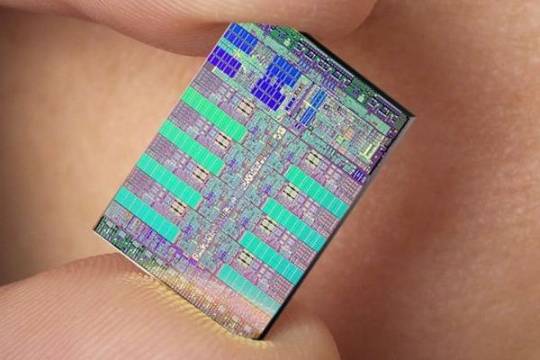Toshiba Wraps New Regza LCD Around Cell Technology
The Cell Broadband Engine Architecture (typically referred to as the Cell or Cell BE) processor used in Sony's PS3 was actually a joint venture between IBM, Sony, and Toshiba, but IBM and Sony have commercialized the architecture far more than their partner. That could change within a year or two; the electronics manufacturer has announced that it will launch a new Regza LCD TV in the Japanese market by the end of 2009.
Toshiba has dipped its toe into commercial Cell deployment before; the company's SpursEngine is a "co-processor that integrates a hardware codec for Full HD encoding and decoding of MPEG-2 and H.264 streams with four SPEs derived from Cell/B.E." video processing is one of Cell's strong suites; Toshiba claims that its upcoming Cell-equipped Regza LCD will be able to upconvert multiple SD streams into HD-quality simultaneously. Although it'll be a bit of a latecomer to the Cell commercial market, it's possible that Toshiba has actually been waiting for Cell to hit 45nm before it jumped on the bandwagon.

The Cell BE: The eight SPE's are colored in turquoise.
"We gathered together our imaging, storage and network technologies," said Masaaki Oosumi, president of Toshiba's Digital Media Network Company. "It will be Toshiba's flagship model in the true sense. It is the ultimate entertainment machine that brings more excitement than a movie in a theater. I would like to let users experience the same sensation as they felt by watching a color TV for the first time."
Final specs on the unit aren't available yet; Toshiba has previously indicated that the display would have a 3820x2160 maximum resolution, and be equipped with an LED backlight.
Toshiba has dipped its toe into commercial Cell deployment before; the company's SpursEngine is a "co-processor that integrates a hardware codec for Full HD encoding and decoding of MPEG-2 and H.264 streams with four SPEs derived from Cell/B.E." video processing is one of Cell's strong suites; Toshiba claims that its upcoming Cell-equipped Regza LCD will be able to upconvert multiple SD streams into HD-quality simultaneously. Although it'll be a bit of a latecomer to the Cell commercial market, it's possible that Toshiba has actually been waiting for Cell to hit 45nm before it jumped on the bandwagon.

The Cell BE: The eight SPE's are colored in turquoise.
Final specs on the unit aren't available yet; Toshiba has previously indicated that the display would have a 3820x2160 maximum resolution, and be equipped with an LED backlight.

